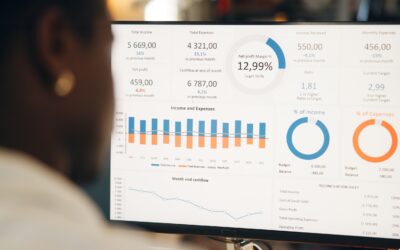Data Alone Doesn’t Inspire Decisions
You’ve been there—PowerPoint slides filled with charts, percentages, and heat maps. Everyone nods politely. Then someone asks, “So… what does this mean for us?” That’s the problem. Data informs, but it rarely *moves* people.
If your board meetings feel like a math lecture instead of a mission rally, it’s time to rethink your storytelling. Analytics can either numb or inspire, depending on how you frame them. The goal isn’t to show numbers—it’s to make your board feel the impact behind those numbers.
Why Boards Struggle With Data
Most board members aren’t statisticians. They joined because they care about your cause, not because they enjoy pivot tables. When they glaze over during reports, it’s not because they don’t care—it’s because they don’t see the story yet.
So your job? Translate spreadsheets into significance. Make the numbers talk. When they hear “donor retention dropped 6%,” that’s abstract. But when they hear, “We lost 42 families who supported us for three straight years,” that lands.
The Psychology of a Motivated Board
Boards act when they feel emotionally connected and clearly directed. They need a reason to care and a roadmap for action. Analytics gives the reason. Storytelling gives the meaning. The blend of both creates momentum.
This is why the best nonprofit leaders don’t just present metrics—they perform them. They make board members feel like insiders in a story that’s still unfolding.
Step 1: Start With Questions, Not Charts
Before showing a single number, start with a question your board actually wants answered:
- Are our donors sticking around—or slipping away?
- Which campaigns actually bring in long-term supporters?
- What’s the real ROI on that gala we keep throwing?
When you anchor your analytics in curiosity, your board leans in. They’re not looking at data anymore—they’re looking for answers.
If you need ideas on what metrics really matter, check out the KPIs that actually matter for online giving. That breakdown helps you filter noise from value before your next presentation.
Step 2: Humanize Every Data Point
Raw data doesn’t change behavior. Emotion does. Translate numbers into human-scale stories.
Instead of: “Our retention rate increased by 8%.”
Try: “Eighty more donors decided we were worth staying with this year.”
Instead of: “Email click-through rate dropped 5%.”
Try: “Fewer people are clicking to read our updates—which means our stories aren’t connecting like they used to.”
This kind of translation makes analytics feel personal, not mechanical. And it builds empathy, not apathy.
Step 3: Use Comparisons That Actually Matter
Context transforms confusion into clarity. Without it, even good data looks meaningless. So frame your numbers like a narrative:
- Then vs. Now: “Last fall, we raised $60K. This fall, $85K. The difference? We started segmenting emails by donor type.”
- Us vs. Peers: “The average retention rate for similar nonprofits is 41%. We’re at 54%. That’s our moat.”
- Goal vs. Reality: “We aimed for 100 recurring donors by Q3. We hit 76. Let’s find out why.”
The moment you add contrast, your data becomes a story with tension—and every good story needs tension.
Step 4: Visuals Aren’t Decoration—They’re Amplifiers
Most board decks are visually dead. Walls of text, mismatched fonts, charts so tiny they look like medical scans. No wonder your message gets lost.
Clean visuals make comprehension effortless. Don’t drown your audience in pie charts. Show one striking visual per point. Use real donor photos, not stock art. If your goal is to increase recurring giving, show how steady monthly donations literally smooth your cash flow line over the year.
Boards remember images that feel real, not graphics that feel corporate.
Step 5: Link Metrics to Mission
Your board doesn’t care about “open rates” or “conversion percentages.” They care about *impact.* Every metric should be tethered to mission outcomes.
For example:
- “Our new email series brought in $18,000 last month—enough to fund three new mentorship programs.”
- “Donor churn cost us $12,000 last quarter—that’s two families we couldn’t serve.”
Every number has a heartbeat behind it. When you connect dollars to direct outcomes, your board stops seeing data as admin work and starts seeing it as fuel for change.
Step 6: Use Predictive Analytics to Provoke Action
One of the most powerful ways to get your board’s attention? Show them what’s coming next. Predictive analytics turns hindsight into foresight. It helps boards plan, not just react.
For instance, instead of saying, “Our recurring donors gave more this year,” say, “If current patterns hold, we’ll add 60 new recurring donors by spring—but only if we keep this retention rate.”
If you’re new to predictive models, you’ll find a helpful primer in predictive analytics for nonprofits. It explains how to forecast outcomes using simple data you already have.
Step 7: Build Micro-Stories Around Key Wins
Your analytics presentation should feel like a highlight reel, not a spreadsheet dump. Every slide should answer one question: “What does this tell us about our progress?”
Tell short, memorable stories:
- “Remember when we tested the $25 suggested gift button? That tweak brought in 42% more small donations.”
- “Our social campaign in March brought in 200 first-time donors—most of them under 35.”
- “When we switched to shorter emails, open rates jumped 12%. Apparently, our readers like getting to the point.”
Stories like these make your board proud and inspired to replicate the success.
Step 8: Frame Failures as Experiments
Boards love progress but fear failure. Reframe losses as data-driven experiments. If a campaign underperformed, say:
“We tested a new peer-to-peer format. It didn’t land—but now we know where to pivot.”
This builds psychological safety for innovation. It tells your board, “We’re learning, not losing.” The most data-savvy organizations treat analytics as a feedback loop, not a report card.
Step 9: Give Every Metric a “So What?”
Never show a number without answering these three questions:
- What does it mean?
- Why does it matter?
- What should we do next?
Data without direction is just trivia. When you translate metrics into strategy, your board walks away with clarity instead of confusion.
Example:
“Donor retention fell 3%. It matters because it affects lifetime value. We’re going to launch a 30-day re-engagement email series to address it.”
Step 10: End With Momentum, Not Metrics
Most presentations end with a chart and a polite “Any questions?”—which is basically an invitation to nap. End with a rally cry instead.
Tie your analytics to the future. Show the story still unfolding.
“Here’s where we are, here’s what’s next, and here’s the part we need your help writing.”
Leave them with a sense of ownership. When your board feels like co-authors, they stop being passive observers and start becoming active champions.
Why This Matters More Than Ever
Boards are busier, more distracted, and more skeptical than ever. You can’t afford to bore them. Data storytelling cuts through noise. It turns your presentation from a meeting into a movement.
If you do it right, your next report won’t end with silence—it’ll end with ideas, energy, and alignment. The kind of conversation that leads to real action.
The Takeaway
Analytics tell you what’s happening. Stories tell you why it matters. When you merge both, you turn insight into influence.
So next time you prep for a board meeting, don’t ask, “What numbers do we need to show?” Ask, “What story are we telling?”
Because when your data becomes a story—and your story becomes a call to action—your board stops listening and starts leading.




0 Comments